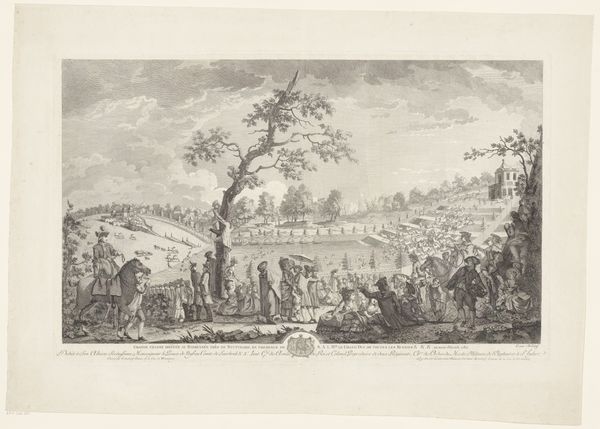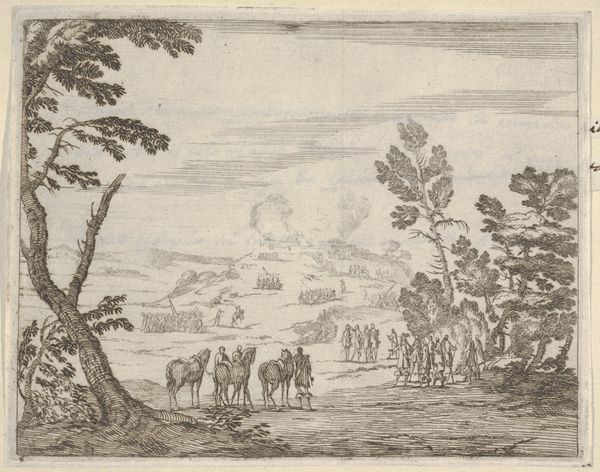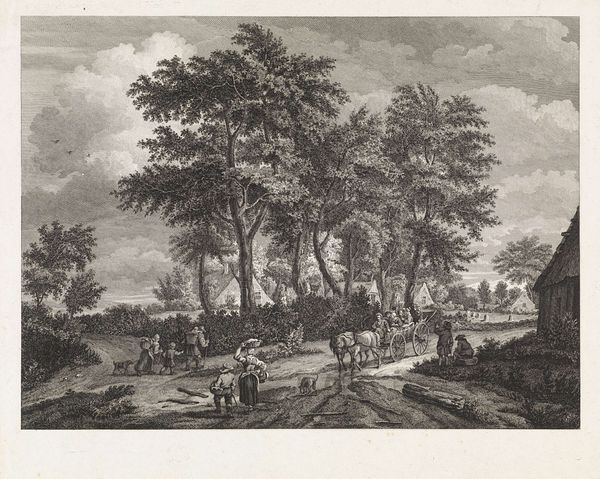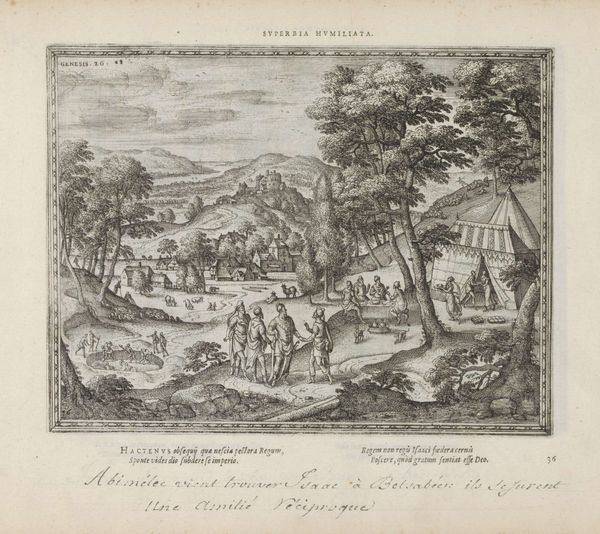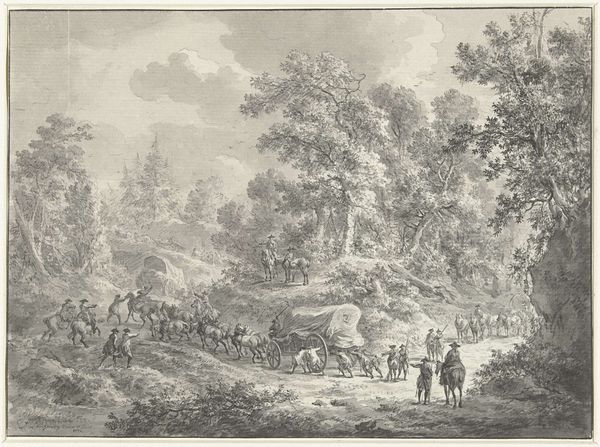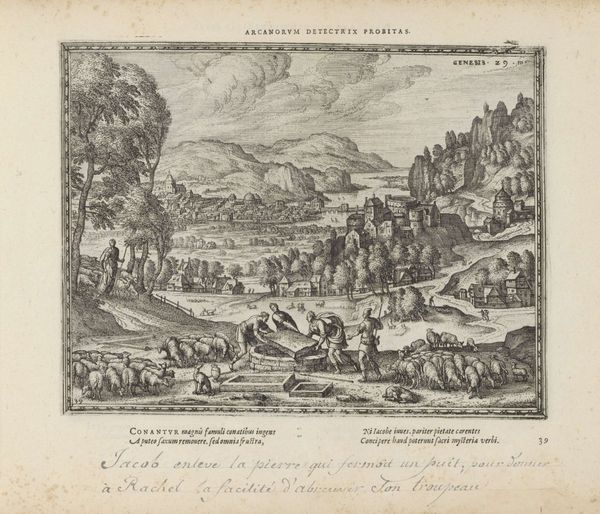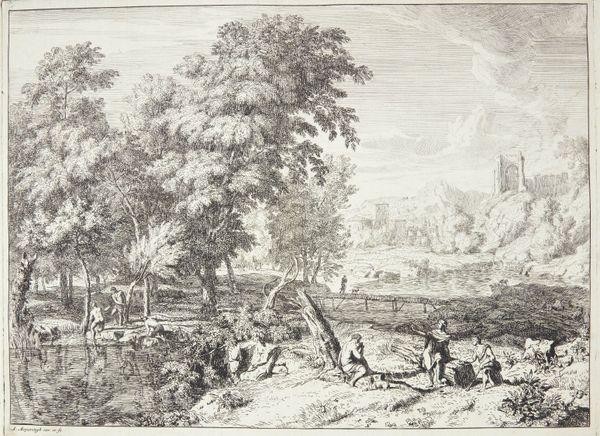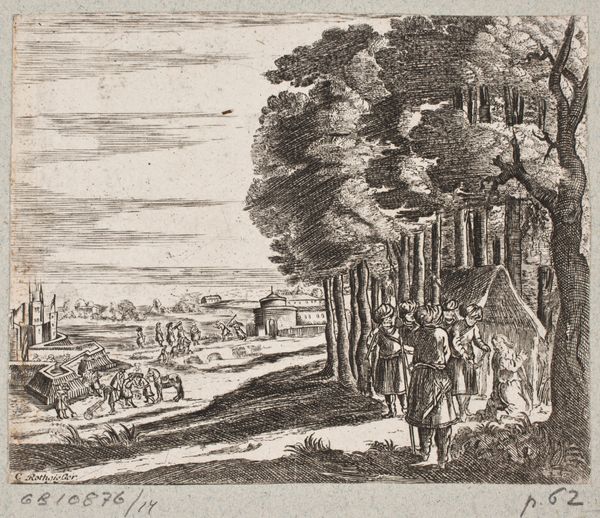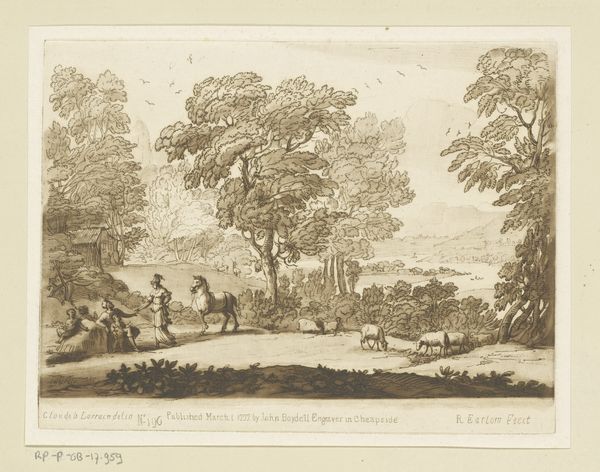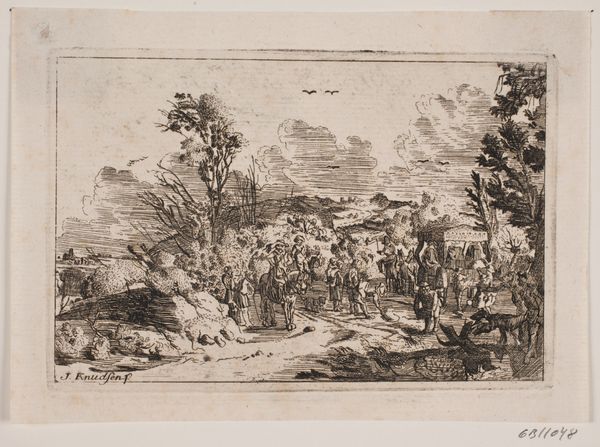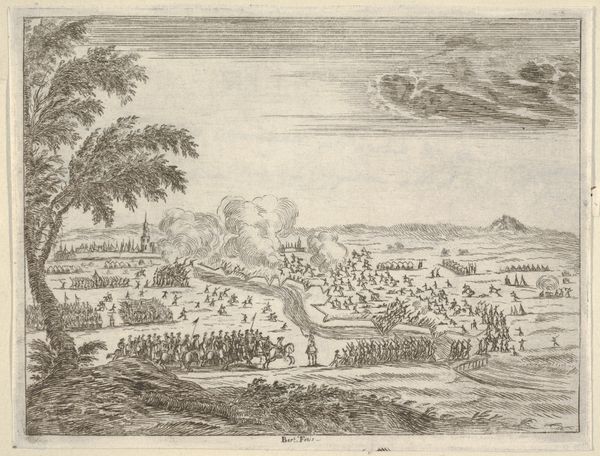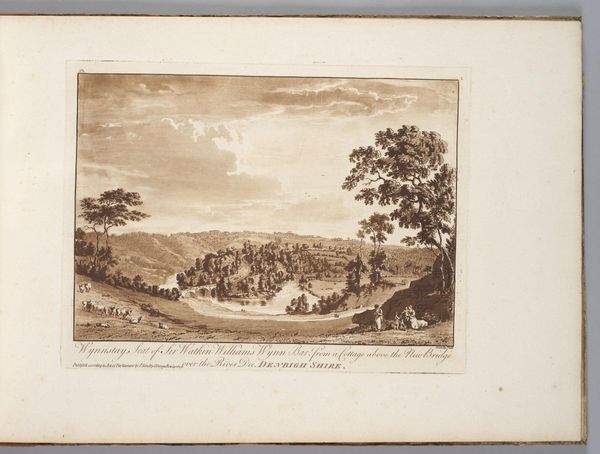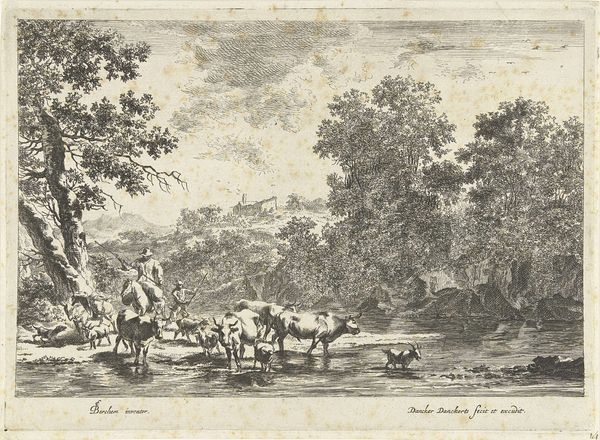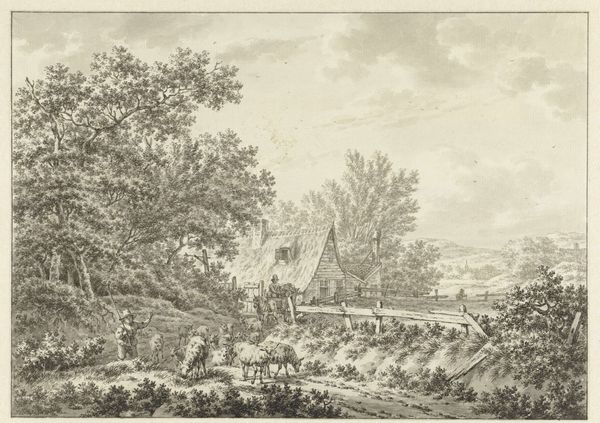
print, etching
#
baroque
# print
#
etching
#
landscape
Dimensions: 120 mm (height) x 212 mm (width) (plademaal)
Curator: What a delicate scene! The textures feel almost dreamlike. Editor: Indeed. We are looking at an etching by Albert Flamen, dating somewhere between 1620 and 1669. It’s titled "Vejfarende nær Longuetoise", which translates to something like "Travelers near Longuetoise." Curator: Longuetoise—the name itself whispers of forgotten paths. The rendering has this wonderful quality; it captures movement with these simple lines. It is a Baroque period piece, known for a lot of ornate flourish, and the landscape scene stands in sharp contrast, wouldn't you agree? Editor: Absolutely. While many Baroque pieces showcased dramatic historical or religious scenes, Flamen uses landscape to represent a quieter narrative, almost documentary. These pastoral scenes provided an escape from the political unrest of the era and became an important motif through which a controlled, tamed version of nature reflected society’s ambitions to govern itself. Curator: The figures winding along the road remind me of figures found in folklore – perhaps they are pilgrims, wanderers… Editor: Certainly the landscape itself became symbolic during the 17th century. It marked a new interest in observing and understanding the natural world, influenced by scientific and philosophical shifts. I see these travelers, the winding road itself, as representing that ever-present interplay between humanity and nature. Curator: The level of detail Flamen achieves is remarkable, particularly with such a stark monochrome palette. How he builds up areas of light and shadow creates such atmosphere. What does that technique tell us about its appeal to contemporary audiences? Editor: Etchings like these, produced in multiples, allowed for wider distribution. Unlike paintings commissioned by wealthy patrons, prints offered a more democratic form of art consumption. That allowed common folk access to scenes reflecting the natural world—landscapes and idyllic countryside became powerful representations of their local experience. Curator: I now see a path. An intimate vision of Baroque culture where travel and daily rituals interlace. Editor: And in that way, it offers a glimpse of their world made widely available for us today.
Comments
No comments
Be the first to comment and join the conversation on the ultimate creative platform.
